7 D2C Ecommerce Retail Marketing Strategies to Adopt
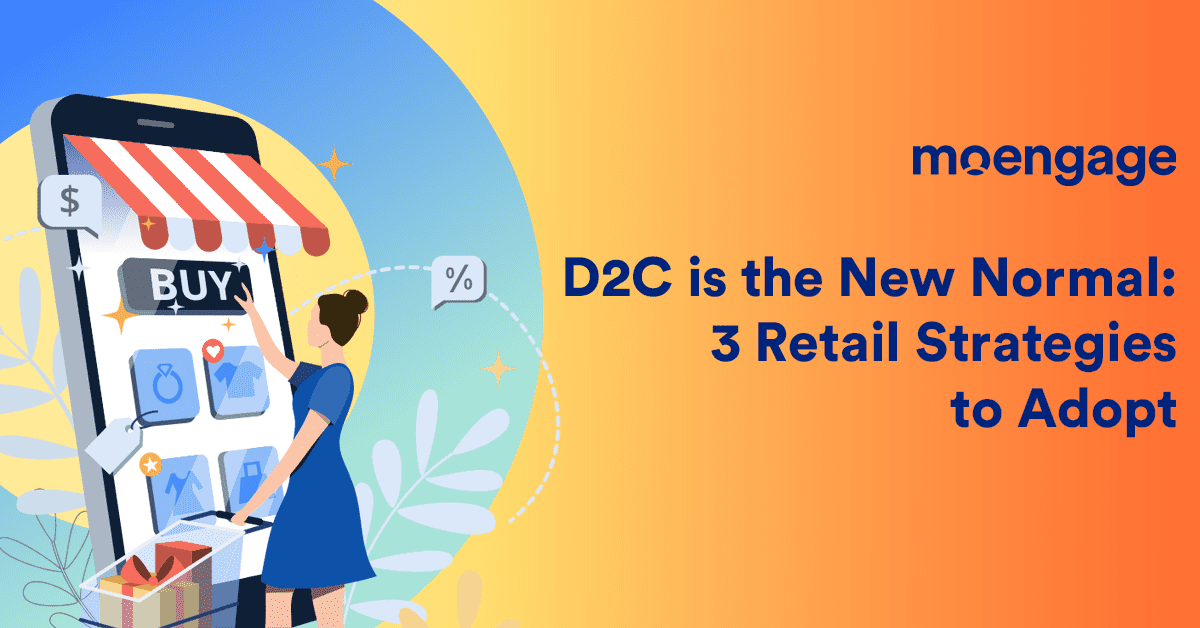
Reading Time: 10 minutes
Let’s begin with the basics, right?
There is a marketing strategy that has captured the attention and excitement of popular retail brands. It’s called direct-to-consumer (DTC) marketing, a strategy in which retail and e-commerce brands sell products directly to customers, bypassing intermediaries such as distributors or wholesalers.
L’Oreal launched a D2C offering called Color and Co that offered personalized hair dye kits to its consumers. The consumers could receive live online consultations from professionals on the colors and packages and order a customized product that would be delivered in their footsteps.
Similarly, Nike built a D2C sales program to sell its products online to consumers directly. Nike witnessed record-high sales during Black Friday and saw its digital sales increase by 84%.
Another fascinating story of D2C marketing is how a furniture company in France ingeniously transformed 240 hotels into their exclusive showrooms, allowing customers to experience their products firsthand. This innovative approach provided a unique opportunity for customers to get a taste of the company’s offerings in a comfortable and immersive setting.
Brilliant, right?
To tell you the truth, we can go on and on about the recent spurt of these direct-to-customer brands targeting their customers – right where they are. But first, let’s explore what D2C is and how it works.
What is D2C (Direct-to-Consumer) in Retail?
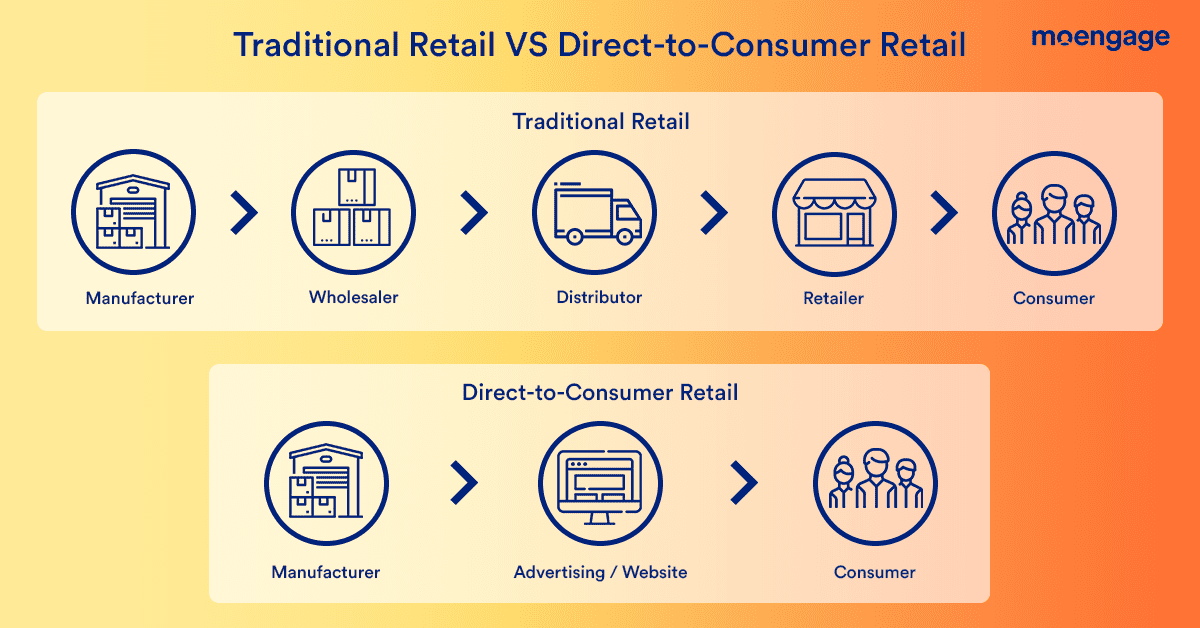
Direct-to-consumer is an E-commerce marketing strategy where you do not have to rely on intermediaries to sell your products.
In this way, you can directly sell your products to consumers through digital platforms such as social media and websites.
Most importantly, you have complete control over the product’s manufacturing, marketing, and distribution.
Why is D2C the New Retail Strategy?
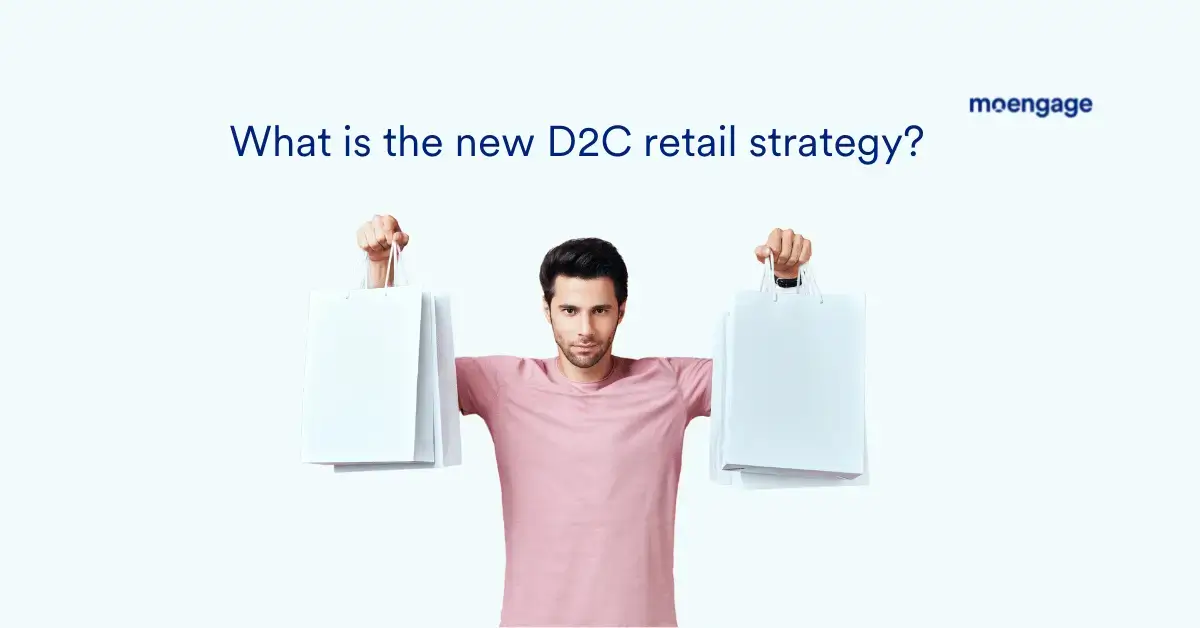
Well, of course, the pandemic played a huge role.
The brick-and-mortar shops shut down, and E-commerce websites slowed down due to heavy traffic. Consumers started to turn to the brands’ websites directly to buy products. This increased the popularity of direct-to-consumer.
The major advantage of these direct-to-consumer products and services is that you develop a deeper connection with your consumers and build customer loyalty. On the other hand, consumers can enjoy a superior brand experience and receive personalized offers.
This makes it a win-win strategy for both consumers and the brand, making it a popular way of shopping.
But does it mean this approach would replace retailers and E-commerce brands? The answer is no. It is an additional avenue through which brands can leverage to sell their products directly to their potential customers.
Retailers and E-commerce brands give consumers the power to compare products based on features, services, price, etc.
Bonus Content
👉 Retail Strategies and Omnichannel Engagement Frameworks [Download Ebook]
What works in favor of direct-to-consumer is the experience it offers to the consumers and its authenticity.
Consumer brands understand that consumers look for a good offline and online experience. So, they have been ramping up their efforts to provide omnichannel personalization to consumers.
And it seems to work. Check out some statistics that prove it.
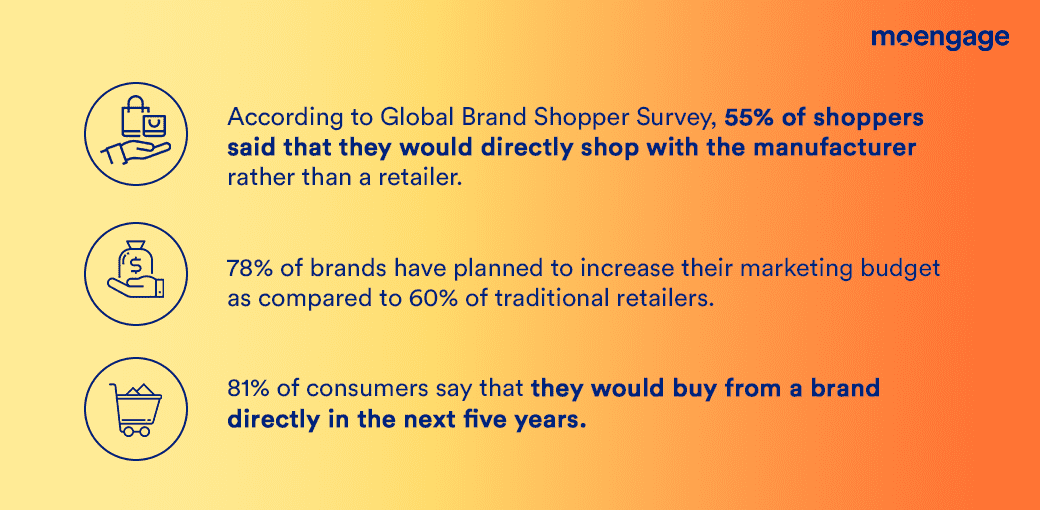
If you want to accelerate your earnings and build a meaningful relationship with your consumer, direct-to-consumer would be one of the best avenues to experiment with, especially now!
Benefits of Direct-to-Consumer Companies
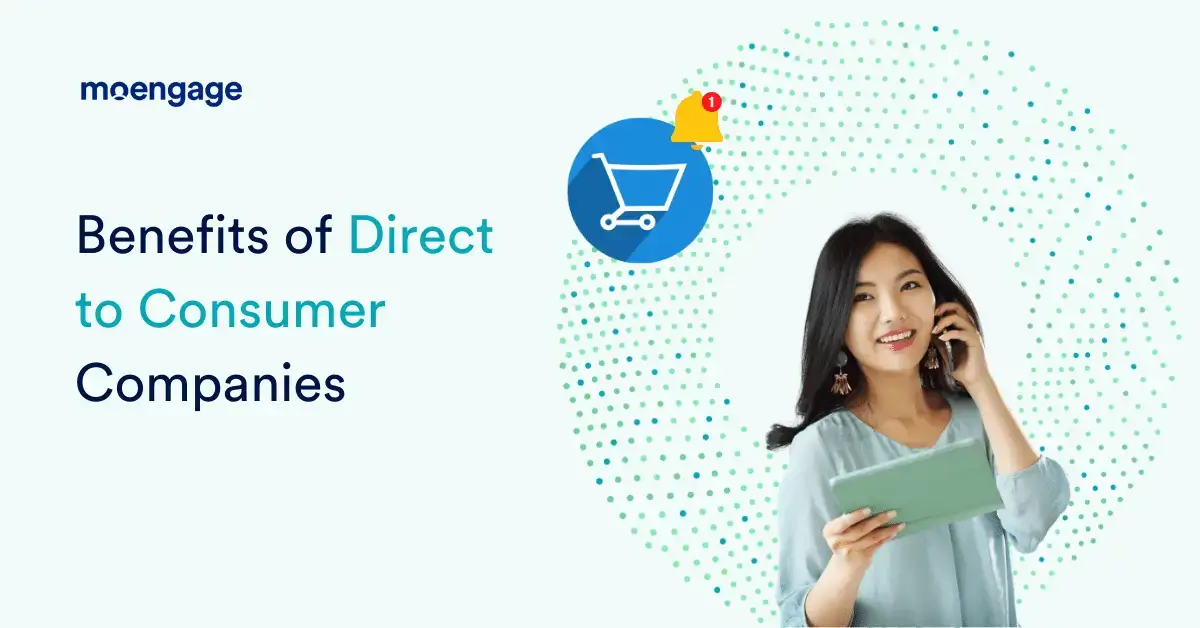
Now that you know what makes direct-to-consumer the new retail strategy, let’s look at how you will benefit from it.
1. More Sales and Profitability (aka Better Brand Recognition)
Direct-to-consumers enable brands to earn more profit by removing the dependency on intermediaries. Hence, you don’t have to pay the middlemen additional product markup. Instead can earn the profits directly. This direct marketing strategy allows you to improve your margins, i.e., save around 10-15% on wholesale distribution and 15-40% from retailers.
Direct-to-consumer is also an opportunity for you to sell a wider range of products to consumers, creating an exclusive shopping experience that may not be available on other platforms.
2. Better Personalization Across Digital Channels
Although retailers have learned the art and science of personalization, direct-to-consumer is not far away from adopting this strategy. Since brands now have better access to consumer data, they can now serve their consumers better and build strong customer relationships.
Personalization leads to customer loyalty and reduces overall marketing costs by 10% to 20%. It also results in a 10% to 15% boost in sales conversion rates.
In turn, brands can maximize their profits, increase their customer’s LTV, and build a deeper connection with the consumer.
MoE tip: As a direct-to-consumer brand, you can use behavioral data to segment the consumers into different categories. Based on that, you can send them personalized content, offers, and discounts to engage with them instead of sending a standardized message.
3. Improved Customer Loyalty
Customer loyalty is the foundation of a successful D2C retail marketing strategy. A direct-to-consumer brand provides more opportunities to build a strong connection with the consumer, unlike retail partners and E-commerce companies.
From personalizing the offers to offering customer loyalty rewards, there are several digital marketing strategies that brands can use to try and win consumers.
For example, the digital marketing strategy can include identifying the consumers who purchase frequently from the brand or leave feedback or reviews on the products on various digital channels. They are your high-value customers and deserve to be appreciated.
Build a deeper customer relationship with consumers who go beyond just being transactional.
An authentic service that showcases a customer-first approach, like sending a handwritten thank you note, can go a long way in building a long-term relationship with the consumer. Alternatively, you can use the data to provide useful tips and tricks in your online community. All these go a long way in developing legacy brands.
Bonus content: How to Use Social Media to Boost E-Commerce Conversions
4. Expand Your Business Horizons
With a D2C brand, you can expand faster and better! All you need are technologies that would support your sales and products. No need for offline channels or running pop-up shops, with D2C, your focus stays on what matters the most – improving the product, personalizing offerings to the loyal customer base, and improving the sales funnel.
5. Improved Customer Data
Get precise first-party data from every step of your sales funnel.
With a D2C marketing strategy using the latest tech stack, you have insight into every online channel and every click/comment/like made. You can use this data to make better business decisions, improve your marketing efforts, or even have a deeper understanding of the changing consumer expectations.
How to Make Your Retail D2C Ready?

1. Create a Process and People Movement Plan
When you shift your retail strategy to D2C, you have to fix a few things to ensure smooth operations. Remember that there are no middlemen in this strategy. So, begin with re-engineering your existing processes and systems, and ensuring that your consumers are re-trained to adapt to the new way of working.
For example, you can no longer rely on retailers to solve your consumer’s query, you have to train your employees to address the queries directly.
From setting up logistics to reach your consumer directly to reworking your customer acquisition and loyalty program, ensure that your consumers can engage with you directly instead of relying on middlemen.
With the right tools and plan, you can transition to this new strategy effectively.
2. Centralize Data under a Single Platform
Your customer would be leaving their digital footprints across all touchpoints. This is a goldmine. Use a single platform to start collecting and assessing these data sets. That’s how you would be able to understand their behavior and segment them to personalize their journey.
- Begin investing in a CRM that would help manage your interactions with consumers.
- Ensure that you have all the details in the unified system to tie up all the information together to create a meaningful engagement with them throughout their journey.
- Consolidating all the information in one platform will help you to create a frictionless and consistent experience for your consumers across all channels.
MoE tip: Probably leverage automation tools like MoEngage to create a personalized journey for your consumers across all channels.
3. Choose the Online Channels to Focus on
Retailers and E-commerce brands have established channels to reach out to consumers. When you transition to the direct-to-consumer strategy, you must determine the channels you would use to reach your consumers directly.
There are various channels at your disposal – your website, app, Whatsapp, email, mobile, browsers, and social media channels like Facebook, Tiktok, etc. You can use these to create marketing strategies that align with each platform, for example, search engine optimization and influencer marketing strategies for your social and browsers, respectively.
Let’s say you own a brick-and-mortar outlet, you can also consider opening franchises in different locations.
The important part to remember here is that your consumer should be able to shop from your brand without any hassles. They should be able to enjoy the same experience across all touchpoints – whether finding the products or paying and receiving the ordered products on time.
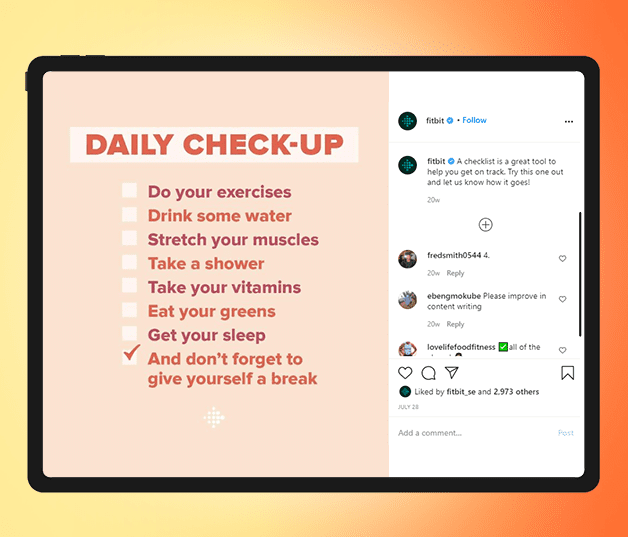
Also, keep in mind that no two consumers shop the same way which is why the focus should e omnichannel or multi-channel.
Make your channels consumer-first, i.e., choose the channels your consumers prefer and not the ones you find convenient to use. Integrate all the channels and use marketing automation tools to segment and send personalized communication to your consumers through SMS, emails, push notifications, remarketing, etc.
Just remember that this is your only way to reach out to consumers directly. Therefore, make it as convenient for your customer as possible.
Now that your transition to a direct-to-consumer retail brand is complete, it’s time to look at five strategies to help maximize online sales.
Five Kick-ass Direct to Consumer Marketing Strategies
D2C platforms are here to stay and it is time that we relook into our marketing strategies across all channels.
Social Media Marketing
If your brand relies on quick customer feedback and word of mouth, this is a must. Using social media platforms like Tiktok, Facebook, and even Instagram, you’ll be able to garner the interest of consumers online.
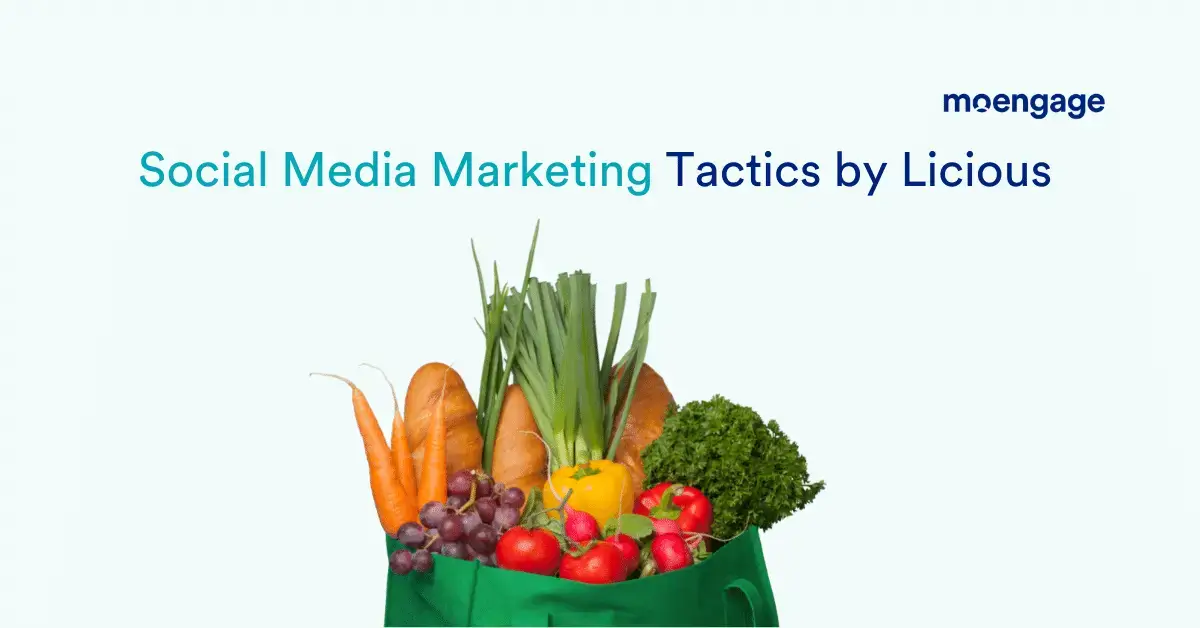
For example, the E-commerce brand Licious used Instagram to talk about Mother’s Day campaigns to draw at your heartstrings and sell their new products.
Search Engine Marketing
A good SEO strategy will help the brand’s products reach right at the top of the browsers across desktop and mobile devices.
Pay per click Marketing
One of the popular direct to consumer strategies is pay per click. In this, the d2c company invests money to create advertisements for their brands and promotes them on browsers or social media.
Viral Video Marketing
Marketing for d2c can often be challenging, especially if you want to break through the clutter. This is when big brands even use the digital world to create viral videos that help increase sales and improve retail traction.
Email Marketing
Using email to market your product is like ‘duh!’ But what sets email marketing apart is personalization.
Segment your customers based on first-time customers, about to churn, or even abandoned carts, and set up emails that address these.
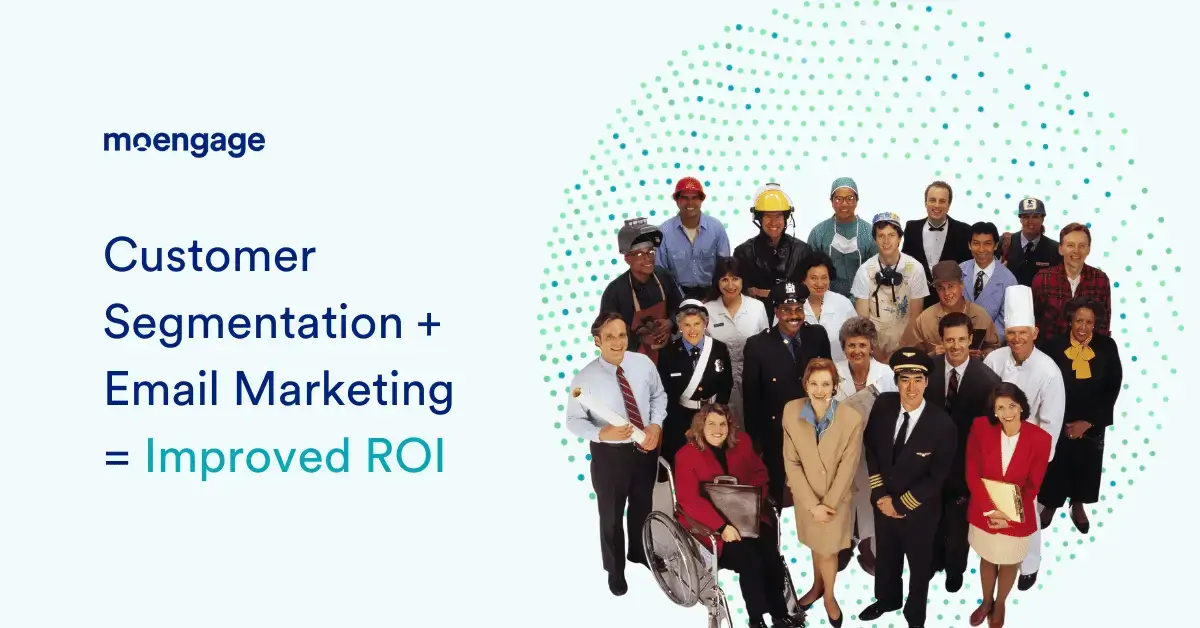
MoE tip: Looking for email marketing and segmentation? MoEngage is here to help to reach directly to consumers.
Influencer Marketing
Well, this is not new, but recently, in the world of Reels and Tiktok, this is not going away soon.
Influencer marketing strategies can be a great way to create user-generated content, especially if you have your products.
Let’s look at Sugar Cosmetics. The brand created a filter and used influencer marketing to create a buzz. The result is xxxx% of sales in minutes.
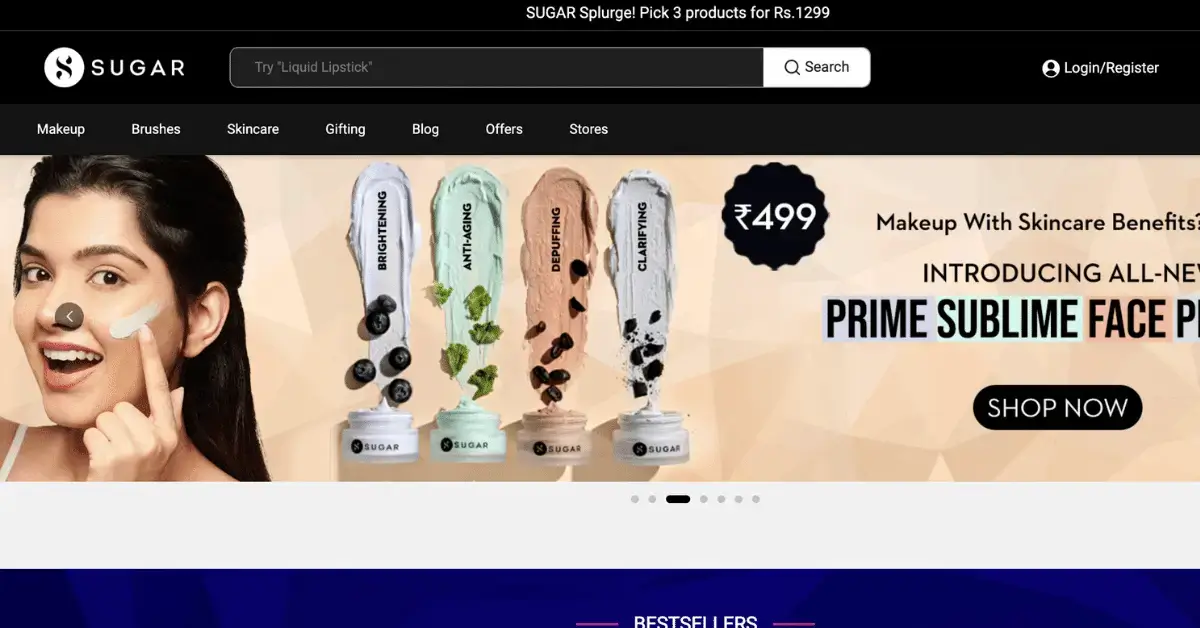
Interesting, isn’t it?
Social Activism
By showing that your business model is socially active is another way of doing D2C marketing correctly.
For example, Blue Apron, another d2c model of the meat delivery sector, differentiated itself by creating a campaign that showcased its environmentally-friendly approach to waste management.
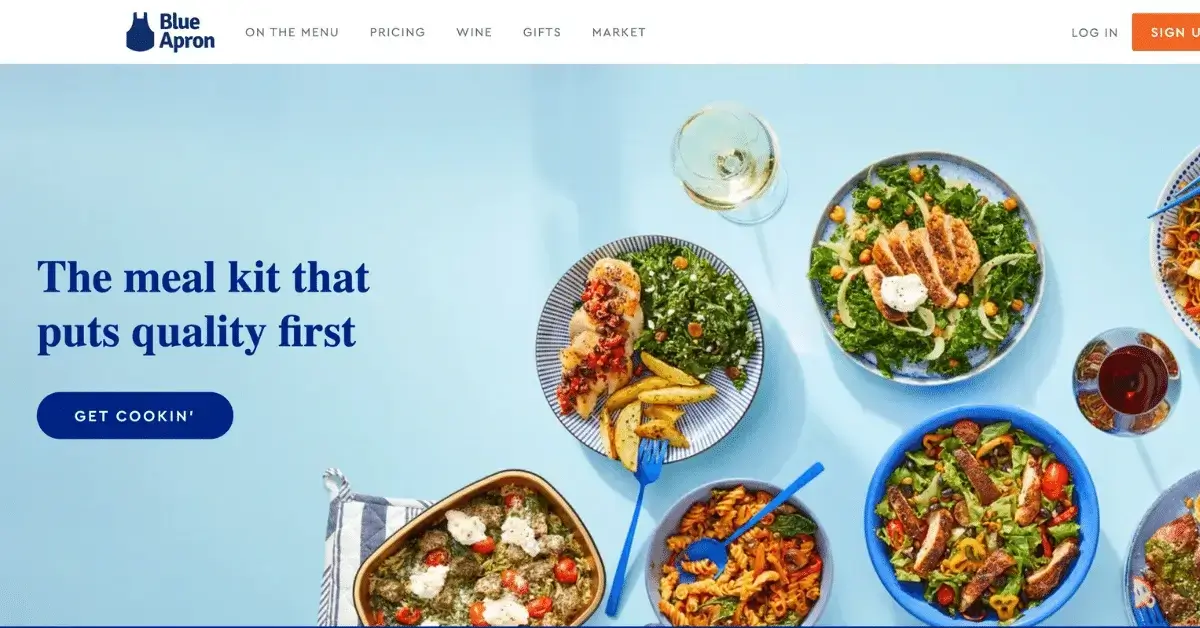
Are D2C Brands Viable?
These brands or even the direct-to-retail brands are not only breaking down barriers and directly reaching their consumers for their products, but they have also successfully managed customer engagement.
One question remains whether it will bring in as much ROI as the traditional channel, and ultimately is it just a passing fad?
The truth is D2C brands are here to stay. Some of these D2C brands are also adopting a hybrid business model so that their sales don’t dip with time.
Look at the Dollar Shave Club or even other legacy brands like Glossier and Hello Fresh, who are extensively using their online communities to be involved with their consumers in every step of their purchasing journey.
Wrapping up
D2C brands has ushered in a new way to reach out to customers. It will be the new normal in the retail and E-commerce industry. Even e-commerce giants like Amazon have woken up to the popularity of D2C and have started their D2C arm called AmazonBasics to attract D2C brands to its platform.
This speaks volumes about how D2C strategy is gaining traction in the ever-evolving E-commerce space. Even spending is expected to grow by 12.7%. Thus, if you have been considering using new strategies to engage with customers, D2C could be a good start. You can start planning your retail strategy to prepare for next year.
Here’s What To Do Next
- Learn the 3 tactics to improve customer LTV
- Read how D2C brands can offer an omni experience to millennials
- Understand how D2C Brand Wakefit.co Transforms its MultiChannel
- Learn about the 7 customer engagement trends that will dominate 2021
- Understand Wakefit.co’s Three-Point Strategy To Digital Customer Growth
- Read the Omni-engagement guide for improving digital banking customer experiences
- Adopt Customer Retention Strategies implemented by Ecommerce and Retail Brands
- Learn how to take an omnichannel approach to retail marketing (it’s a 3-part series)
- Understand how Customer Engagement is going to shape the future of retail and D2C experience







